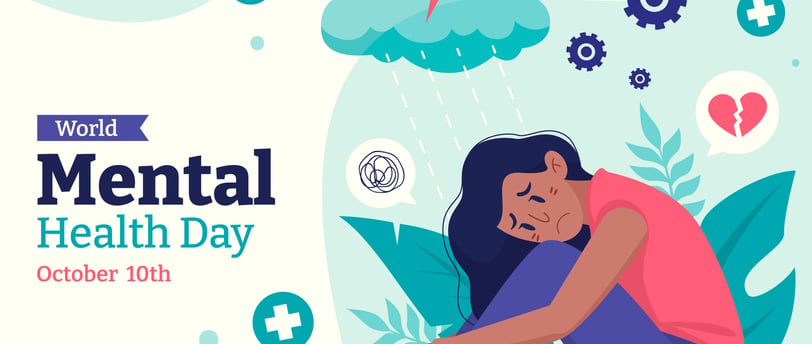Mental Health In India
1/20/20252 min read


# Mental Health in India: Breaking the Silence, Building Support
India faces a significant mental health crisis, yet it remains one of the most underserved areas in the country's healthcare system. With a population of over 1.4 billion people, the challenges are immense, but there's growing recognition of the importance of mental health and emerging signs of positive change.
## The Current Landscape
According to recent estimates, nearly 150 million Indians need mental health interventions, but less than 30% receive professional help. This treatment gap stems from multiple factors: severe shortage of mental health professionals (with only 0.75 psychiatrists per 100,000 people), limited infrastructure, and deeply rooted social stigma.
## Cultural Context and Stigma
In Indian society, mental health issues are often viewed through a complex lens of cultural and religious beliefs. Many families prefer to consult religious leaders or traditional healers before seeking professional help. The stigma surrounding mental illness can be particularly severe, leading to:
- Social isolation and discrimination
- Delayed treatment and worsening conditions
- Impact on marriage prospects and employment opportunities
- Family shame and secrecy
## The Economic Impact
The mental health crisis isn't just a social issue—it's an economic one. Studies suggest that mental health conditions could cost India's economy over $1 trillion in lost productivity between 2012-2030. The impact is particularly severe among young adults in their prime working years.
## Recent Progress and Initiatives
Despite these challenges, India has made notable strides in addressing mental health:
The Mental Healthcare Act of 2017 marks a significant milestone, recognizing mental healthcare as a fundamental right and decriminalizing suicide attempts. The government has also launched initiatives like the National Mental Health Program (NMHP) to improve access to care.
Digital mental health platforms are emerging as game-changers. Telehealth services and mental health apps are making counseling more accessible, especially for younger, tech-savvy populations in urban areas. These platforms often offer services in multiple Indian languages, helping bridge the urban-rural divide.
## The Way Forward
To build a more mentally healthy India, several key areas need attention:
### Education and Awareness
Implementing mental health education in schools and workplaces can help reduce stigma and increase understanding. Public awareness campaigns, particularly in regional languages, can reach diverse populations.
### Infrastructure Development
Increasing the number of mental health professionals through enhanced training programs and incentives for psychiatry specialization is crucial. Building more mental health facilities, especially in rural areas, remains a priority.
### Community-Based Approaches
Leveraging existing community structures, like ASHA workers (Accredited Social Health Activists), can help create a grassroots mental health support system. Training community health workers in basic mental health support can significantly expand reach.
## Conclusion
India's mental health landscape is at a crucial juncture. While challenges persist, the growing awareness, policy changes, and technological innovations offer hope. The path to better mental health care requires sustained effort from government, healthcare providers, communities, and individuals.
The stigma around mental health is slowly lifting, and more people are speaking openly about their experiences. This cultural shift, combined with improved access to care, suggests a more promising future for mental health in India. The journey is long, but the steps being taken today are laying the foundation for a more mentally healthy tomorrow.
